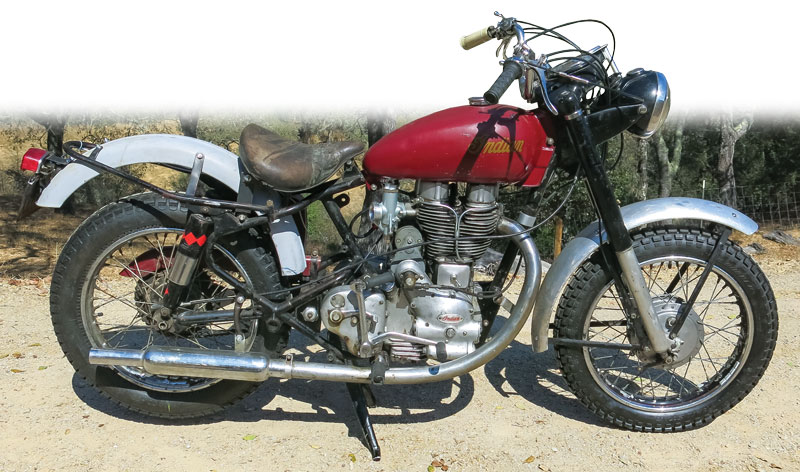
Here was a nice piece of equipment for enjoying the unpaved places, advertised by Indian as a “Flashy, rough-and-tumble scrambler—most versatile of any competition model.” A quickly detachable headlight meant you could ride to the races, take off the light, win your race and hopefully get home. That was the spirit back in the 1950s, when races tended to
be local and fun.
The big 500cc single put out some 30 horsepower, using an undersquare alloy cylinder (84mm bore, 90mm stroke) with cast iron liner and a two-valve head. If the 8.5:1 compression ratio wasn’t enough, the dealer recommended taking out the copper and asbestos head gasket and raising it to 9:1. And if that made it difficult to start, the cylinder head had a “decompressor.” Great American machine, proud to wear the war bonnet of the Indian marque.
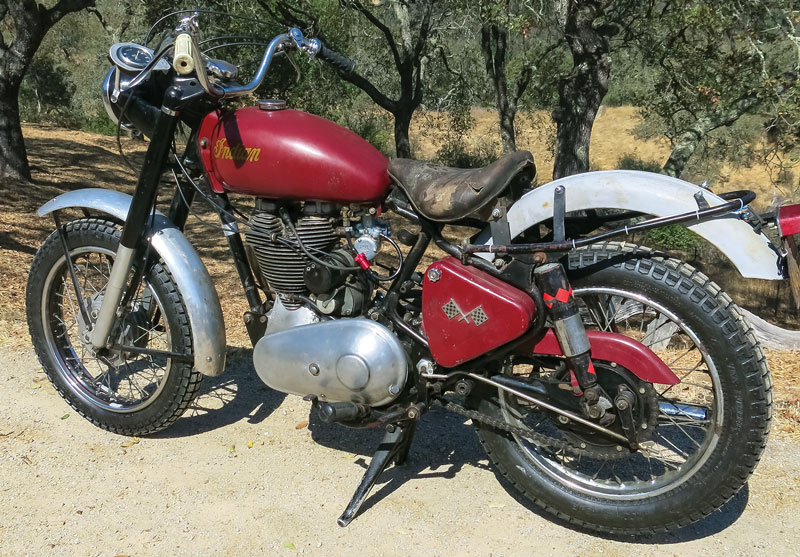
Only problem was that the bike was not American. It was British, a Royal Enfield Bullet done up in Indian Red, with Indian writ large on the gas tank and the right-side timing cover. So how did all this come about?
Following World War II Indian was definitely running a distant second to Harley, with the overhead-valve Harley engine much preferred to the Indian flathead. Then the president of Indian, Ralph Rogers, decided that what the company needed was a new breed of motorcycle, essentially copying the British-styled OHV singles and twins. In the summer of ’48 the dealers received crates containing the 220cc Arrow single, and the 440cc Scout twin—essentially two Arrow motors side by side. However, there had been too much of a rush to get these on the market, and they had problems, not the least of which was the cost of producing them. The old standby, the Chief, powered by the 74-inch (1,200cc) V-twin, was absent from the ’49 line.
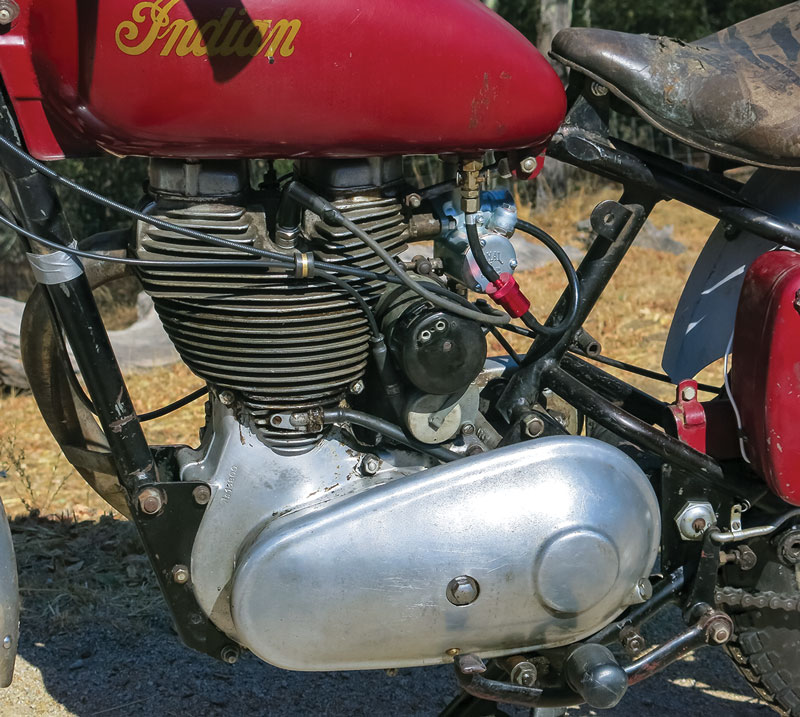
Rogers was willing to have his dealers sell British bikes as well as Indians, and made a deal with an English businessman, John Brockhouse, to import Nortons, Vincents, Royal Enfields and several other marques to which he held the export rights. In September of 1949 the Brits devalued the pound, making the imports 30 percent cheaper. In January of 1950 Rogers resigned, and the Indian company was split in two, with Brockhouse having the Indian Sales Corporation but not the manufacturing side. The big Chief was resuscitated in 1950, with a slightly bigger 80-inch (1,300cc) engine and a modern telescoping fork. However, Brockhouse was more interested in selling British bikes than the big Chief, and allowed the Chief to die at the end of 1953.
He next signed a five-year deal, 1955 to 1959, with Royal Enfield, allowing him to make some minor modifications to the line and rebadge them as Indians, including a new timing cover with a bright red “Indian.” Half a dozen “new” bikes appeared, with vaguely Indian-ish names, from the 150cc two-stroke Lance to the 700cc OHV vertical-twin Apache. And right in the middle was the Woodsman.
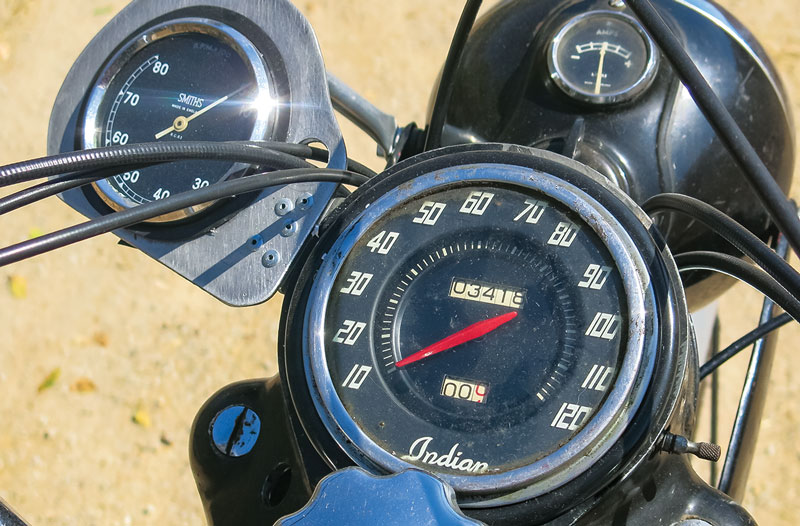
The engine was semi-unit, with the Albion gearbox bolted to the crankcase allowing for a two-row, or duplex, primary chain. Should it need attention, a single bolt removed the primary cover, exposing an easily adjusted slipper plate over which the chain ran. The lubrication system used the traditional British dry sump, with the four-pint oil reservoir tucked between the crankcases and the tranny; this had a cleanable filter. The crankshaft operated two pumps, one making sure the oil got to the right places, the second sending oil back to the tank. The four-speed gearbox had its own oil supply.
Spark and lights were provided by a Lucas magneto and dynamo, stacked up behind the cylinder and run by a series of five gears coming from the crankshaft.
Frame was the semi-cradle design, of chrome molybdenum, with a large downtube going from the steering head down to the front of the engine and a backbone under the 2.4-gallon tank. A swingarm rear used Armstrong shocks, while the telescoping fork had a hint of sophistication, each leg using a two-phase spring and valve-porting to control, to an extent, rebounding. A steering damper was standard. An “engine undershield,” fancy term for a skid plate, was included.
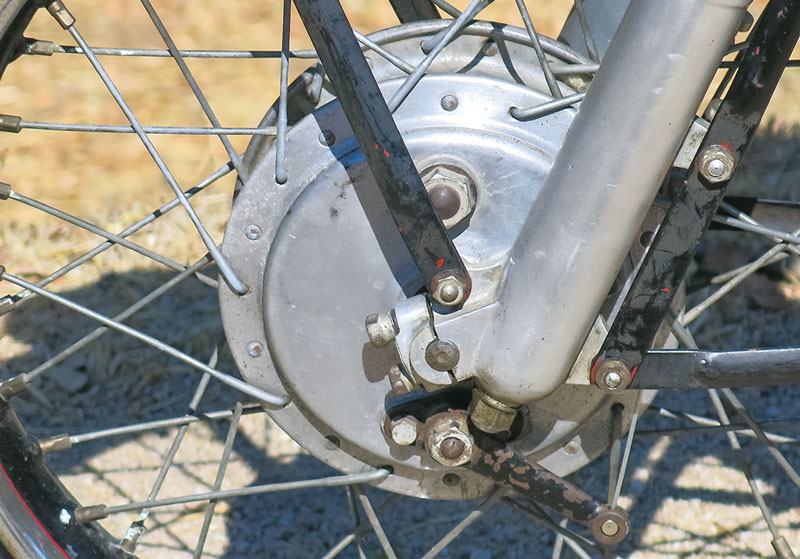
Wheels were 19 inches at the back, 21 at the front, sporting mildly knobby tires. This was, in truth, a dual-sport machine, which Indian presumed would be used mostly on the pavement. Up front was an excellent dual six-inch drum, the dual meaning that the full drum had pads and activating cables on both sides. A single seven-inch drum was at the back. The owner could easily change sprockets if he wanted a little, or a lot, more hill-climbing power. Chrome fenders added a bit of glitz.
A very complete “Riders’ Instruction Manual” came with the bike, covering everything from “Tappet Adjustment” to “Dismantling the Crankcase.” On the front cover it said “The Indian Company, Springfield, Massachusetts,” while on the back it read “Printed in England.”
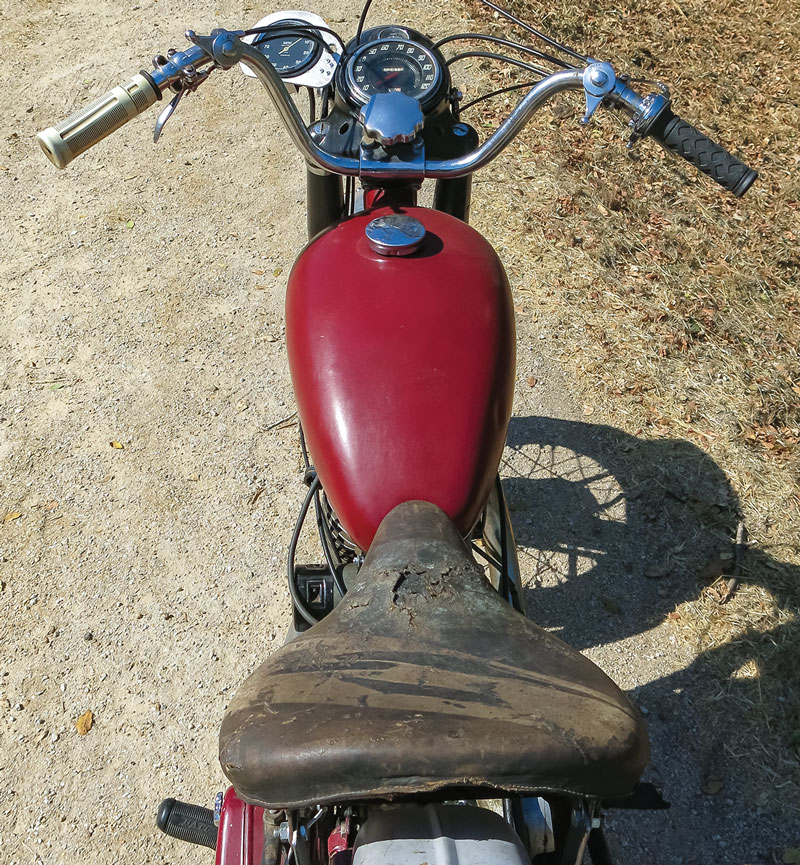
You will note some changes on this model, which has had many years of hard use in the California and Nevada deserts. Instead of a bench seat there is a solo saddle, the Amal Monobloc carb lacks an air cleaner (temporarily), and both wheels are 18 inches. Exhaust routing is low, rather than the high style done by Indian, and a tachometer has been added. Needless to say, the paint on the tank is not original.
The Brockhouse venture was not very successful, with only some 7,000 riders buying Royal Enfield Indians over those five years. In 1960 John B. sold what was left of the Indian business to AMC, the Associated Motor Cycle company, which tried selling rebadged Matchless models for a couple of years.
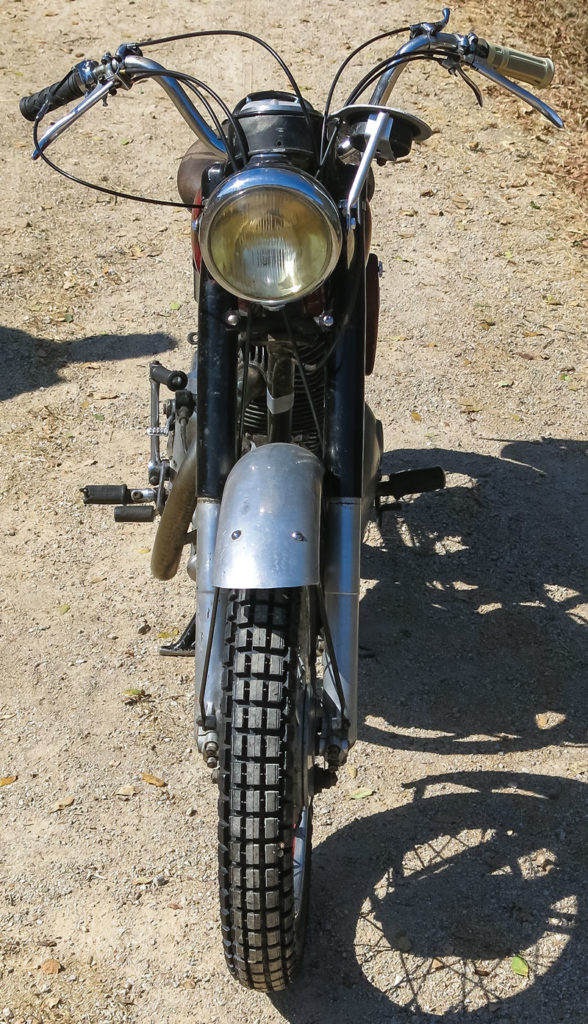



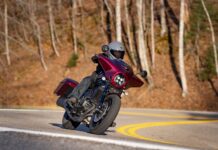




Thanks for this article.
Thx so much for de whole schmeer! Knew it was a complicated, ill-starred era for Indian. Cool ‘sickles to be sure, but sagged, sorry, sales for America’s First. Now if I only can find an Arrow, or 440 Scout, or one of the preceding,…….and not have to liquidate half of my retirement?? Cheers, El Paladin